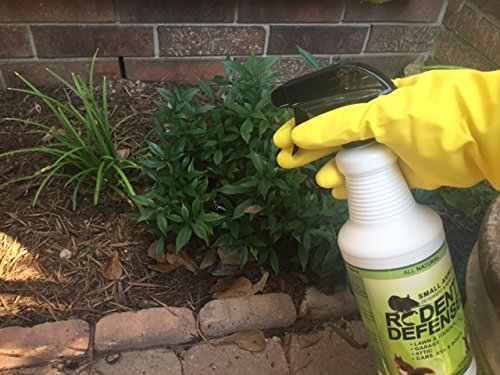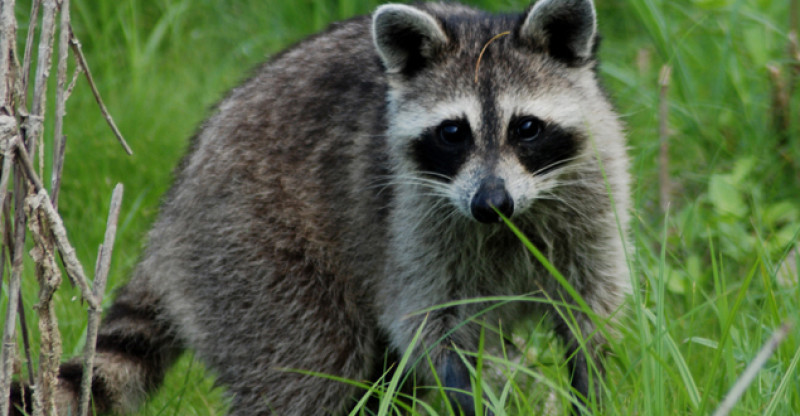Get rid of Raccoons Using Repellents and Traps
The animal known as the raccoon is known to be curious and mischievous. Although raccoons are fond of inhabiting hollow trees and logs near small water bodies, they have been known to venture into human dwellings. Thus, it is not surprising to find a raccoon holed up in your attic, basement or even chimney. Being nocturnal animals, raccoons have a habit of raiding trash cans and stealing your pet’s food. It is for this and other reasons that the raccoon is considered by many to be a nuisance animal that needs to be removed. There are various methods used, with the main ones being the use of traps and repellents.
Before embarking on the process of trapping and removing a raccoon from your business or residential premises, it is important to evaluate whether indeed you have a raccoon problem. The best way to do this is to check your attic, beneath the porch, in the chimney and other such areas. One of the primary raccoon infestation sign to be on the lookout for is tipped garbage cans and half eaten garden items such as corn. Raccoons will damage walls while trying to enter into homes. Thus, structural damages can also be a sign of a raccoon infestation
The number one sign of a raccoon infestation is a raccoon itself. Raccoons measure 61 to 91 centimetres in length and have a distinctive ringed tail. A raccoon’s face is white with the exception of the area around the eyes, which is black creating the impression of a black mask. In regards to eating habits, raccoons are classified as omnivorous animals, which mean that they eat both meat and vegetables. Apart from tipping garbage cans, raccoons can also contribute to the spread of diseases and can endanger the lives of your family members especially those who are allergic to animal fur.
Though there is always the option of trapping and removing a raccoon from your premise, it is advisable to employ preventive measures to minimize the risk of raccoon infestation. One preventive measure that you can employ is restricting access to foods commonly eaten by raccoons. Raccoons eat fish, crams, berries and other fruits. Additionally, your yard area ought to be garbage or litter free if you are to avoid raccoon problems. This is because raccoons move into our homes in search of foods. If you have leftover foods, clean it up to make your home less inviting to a raccoon. Trash and garbage bins should be removed on a regular basis and need to have secure locks. If you already have a raccoon problem, there are various ways of dealing with it.
How To Get Rid Of Raccoons Using Traps
Trapping is one of the options available to you if you have a raccoon problem. Preferred by professional critter removals, trapping is an art that requires patience and the right kind of tools. Therefore, the kind of trap you use will determine the outcome. The recommended trap is one that is 32 to 42 inches in length and 12 inches by 12 inches in width and height. The trap should be made from sturdy steel, as raccoons have the ability to get out of traps thanks to their crafty nature. Apart from being crafty, raccoons are also strong animals.

There are two main types of traps that can be used for trapping a raccoon, the one door and the two door trap. The one door trap is preferred to the two-door model by professional removals due to it being large. The one door model is large enough to accommodate large animals, raccoons included. The one door trap also offers better bait protection. The two-door model has a higher success rate thanks to its two doors. Moreover, since the trap is see through, anxious animals are able to calm down.
The placement of the trap will be instrumental in the outcome of the trapping process. A raccoon trap should be positioned in an area frequented by the raccoon. Thus, since raccoons are fond of covered areas such as attics, porches, mulch beds, sheds, wood piles, along walls, underneath structures, fence lines and tree hollows, etc., it is recommended to place a trap in such areas. Also in areas where there is a garbage bin. The trap should be placed on a flat surface. Once the trap has been positioned in the appropriate manner, it is time to set the bait.
Bait is another factor that will be instrumental in the outcome of the trapping. The bait needs to be something that will attract a raccoon. Raccoons love sweet foods, e.g. marshmallows and watermelons. Once you have identified the right food to use as bait, the next step is to position the bait appropriately. The bait ought to be placed in such a manner that the raccoon will have to enter the trap fully to reach the bait food. As already observed, raccoons are crafty, and will try to knock down the trap to get to the bait food. To prevent this from happening fasten the trap to the ground.
The final step is setting the trap doors. Each trap comes with a manual that is unique to it. It is important that you go through the manual to get a better understanding of a trap’s set technology. Once you have set the trap doors, it is always a good idea to test the trap by pressing on the trigger to set off the close and trigger mechanism. Once the trap is set, ensure you check it regularly as raccoons tend to get anxious and scared quickly.

The trapping and removal process does not end when a raccoon gets caught in your trap, as you have to consider what to do with the raccoon. There are several things to do, one of which is to relocate the nuisance animal. However, before relocating a raccoon, it is important to know the laws relating to relocation of raccoons that apply in your state. In some states, it is illegal for you to relocate a raccoon without a licence. If such a law applies in your state, it may be a good idea to contact a licensed critter removal to deal with the relocation of the raccoon.
Once you have caught a raccoon be cautious and hold the cage away from your body. Additionally, drape a cloth over it, and most importantly handle the cage gently and with care. When removing raccoons in the attic, check to see whether the raccoon is alone or has babies. More often than not, persons with raccoon problems capture the mother leaving the babies. This leads to a big problem where the babies make disturbing noises and eventually die of starvation. It is estimated that nine out of ten do-it-yourself raccoon trapping and removal processes end with the mother being separated from the babies.
How To Get Rid Of Raccoons Using Repellents
Raccoons are mammals just like you and me. Thus it is close to impossible to remove a raccoon using repellents. Unlike insects, raccoons and other mammals are not affected by bad smells or noises. Additionally, since raccoons are fearless animals, repellents whose smell mimics the urine of predators such as coyote will have no effect on them. However, it is possible to deter a raccoon from invading your home using repellents. Thus, repellents can be used for deterrence.
There are different types of repellents available in the market, with the three main types being granular, liquid and electric. Liquid repellents are normally used in outdoor areas such as on trash bins. When using liquid based repellents, it is important to note that they are effective at a temperature of 40 degrees Fahrenheit. Reapplication of the repellent is highly recommended particularly if you reside in an area that experiences heavy downpours. Granular Repellents are usually in the form of granules and are used to form a protective perimeter around certain areas such as gardens, raccoon beds and sheds.

Electronic repellents are the most effective of the three repellent types mentioned. Electronic repellents produce bursts of water that scare away raccoons. One of the main advantages of these types of repellents is that they are easy to maintain. Also, electronic repellents are not restricted to raccoons and can be used to deter other critters as well. Since different repellents are made from different compounds, it is advisable to consult a professional before applying a repellent. Although, repellents can be used to dissuade raccoons from invading your premise, they cannot be used to scare away raccoons from your premise especially a mother raccoon with babies.

Available in Amazon.com
Albeit it is true that raccoons can be a nuisance and pose a threat to the health of you and your family, inhumane methods of dealing with raccoon problems are not encouraged. In fact in some states it is illegal to trap a raccoon without the requisite license. Sadly, there are many cases of homeowners either drowning raccoons or leaving them in the heat to die. Trapping of raccoons should be done within the confines of state laws. Furthermore, raccoon trapping is not an art that can be learnt overnight. However, there are some useful tips that you can use to perfect your trapping skills.
First, avoid using meat as bait. Raccoons are omnivores and can eat meat and veggies. However, meat attracts cats and other critters. Thus, using meat bait can result in you trapping your neighbour’s cat, which can result in a law suit. If not your neighbors cat, using meat bait can lead to the trapping of stray cats and opossums, which worsen the situation, to avoid problems use vegetables and bait instead of meat. Stray cats tend to be ferocious when caught, so by all means avoid using meat bait.
The size of the cage used will be instrumental as well. As mentioned already, a good cage needs to be large enough to accommodate a raccoon. In some areas, raccoons are small and can be trapped using small cages. For example, Florida raccoons are known to be relatively smaller compared to their counterparts. There are various cages available for sale. To select the appropriate model consult a professional trapper prior to purchase. A cage that is 10 inches wide, 12 inches high and 32 inches long will be ideal for capturing an average sized raccoon.
Sometimes a raccoon will enter your home not to build a nest but to forage for food. There are several ways through which a raccoon can gain access to your home. The most common is through the pet door, in particular when there is food on the other side. Raccoons have an extremely good sense of smell and will be attracted to pet food. When a raccoon gets into your home in search of food, there are several things you ought to do. First, never get close to the raccoon as this can lead to a confrontation. A cornered raccoon can be dangerous so do not corner the raccoon.
The second thing to do is to lock your children and pet in another room away from the raccoon. Also, open all the windows and doors in the house and get out. This way the raccoon will be able to get out of the house voluntarily. Although this sounds difficult to believe, a raccoon will leave your home if it finds nothing to eat. If you cannot open the windows, try to push the raccoon out with a broom, but take caution not to get close to it. If you have a snare pole, use it instead of a broom. Most importantly contact a professional removal to come and deal with the problem.
